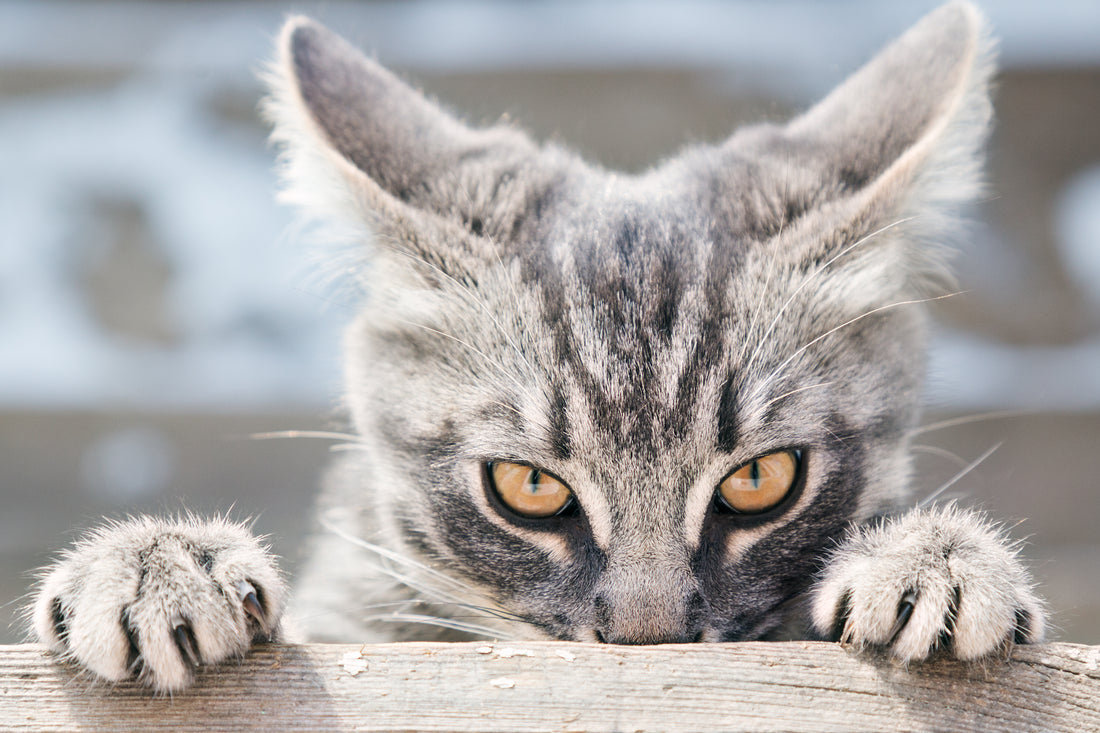Of all behavioural problems, cat aggression towards humans is the one that becomes most complicated with the passage of time. Not only can aggression become more frequent, but it's not unusual for the intensity of the aggression to increase over time. This is what sets aggression problems apart from all other behavioural problems: the fact that waiting can make aggression increasingly dangerous for humans over time. What's more, as any cat behaviourist will tell you, it's when a person waits until they start to fear their cat that solutions become very difficult to implement.
If there's one very important thing to remember when it comes to aggression in cats, it's that you mustn't wait to seek help, because there's very little chance of the problem disappearing on its own and a very good chance of it getting worse. So you need to be able to identify the problem early on. That's what we're going to do together.
Signs to look out for
It's important to understand that cat aggression towards humans can have several causes. The first, which must be ruled out before anything else, is related to pain or physical discomfort. Cats can be quick to hide their pain, so you need to be alert for signs of discomfort. If a cat is suffering from chronic pain or an undiagnosed medical condition, it may react aggressively when someone tries to touch or handle it. A visit to the vet is essential and is the first thing to do before going on to assess the types of aggression.
Once the vet has been seen and the medical cause has been resolved, aggression can be divided into two types: predictable aggression and unpredictable aggression
Play agression
In the category of predictable aggression, we find aggression caused by a lack of activity or enrichment of the cat's environment. These are characterised by the cat's body language, which shows that it is trying to play and provoke movement to satisfy its desire to hunt and expend its energy. The cat may ambush or chew and then run away in order to get a reaction from the human.
The solutions to this type of aggression are simple and linked to the need to enrich the cat's environment and give it alternative targets to your calves. Easy solutions include two 10-minute play sessions a day, interactive bowls, solitary toys, walks on a lead and, why not, training sessions to teach your cat to do tricks. Yes, a cat can be trained just like a dog, and it's an excellent way of enriching his environment. Check out the many videos on the internet that use positive reinforcement as a learning technique.
When a cat talks to you, you have to listen
Cats can feel threatened by unfamiliar situations or people, which can trigger an aggressive reaction. For example, if a cat is confronted with a new person, visitors, noisy people, people petting in the wrong place or children chasing it, it may feel cornered and react by scratching or biting to defend itself. The solution here is obvious: leave the cat alone as soon as it shows any sign of irritation.
The problem is often that people don't understand a cat's body language. So let's summarise the signs cats use to tell humans to "Stay away, I don't like what's going on at the moment":
- Firing (spitting) or growling
- Whipping tail
- Ears folded back on the head
- Dilated pupils
- Swollen back and tail
Just make sure you respect and enforce these signs and the problem should improve greatly.
When the cat lashes out
It's not uncommon for a cat to adopt a proactive aggression strategy in front of a stranger or a visitor to the house. The cat will then attack the person even though that person has done nothing to provoke the aggression. By showing how dangerous it is, the cat hopes that the person will do everything to avoid approaching it. And it works!
It's this type of reaction that many owners don't understand and that requires the intervention of a cat behaviourist. The good news is that it's a fairly easy problem to solve.
Unpredictable agression
Given its unpredictable nature, this type of aggression is normally very anxiety-provoking for people. However, it is often because people are unable to identify the causes or are unable to read the cat's body language that aggression occurs. This type of aggression therefore requires the intervention of a cat behaviourist. Not only can he or she identify the many causes and correct them, but he or she can also teach the cat's adopter feline body language, which will enable him or her to anticipate aggression and react better to it until it has been dealt with.
Unfortunately, aggression towards humans is responsible for many cats being abandoned and sometimes even euthanised. It's important to know that the causes of aggression are often the same and that it's relatively easy to address them and modify the cat's reaction to ensure a good relationship between the cat and its adopter!
Daniel Fillion, Educhateur



